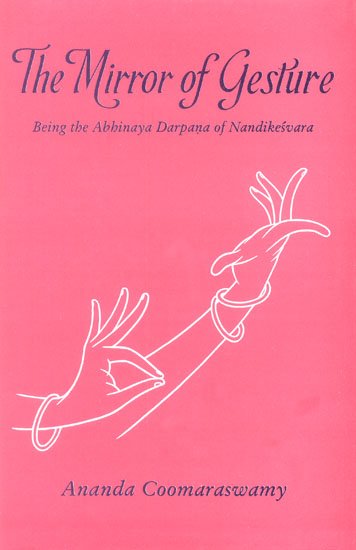Abhinaya-darpana (English)
by Ananda Coomaraswamy | 1917 | 16,981 words | ISBN-13: 9788121500210
The English translation of the Abhinaya-darpana (“the mirror of gesture”) by Nandikeshvara: an encyclopedic manual of the art of gesticulation. It belongs to a wide range of literature known as Natya-shastra: the ancient Indian art of dramatic performance, theatrics, dance and music. The Abhinaya Darpana is an abridgement of the Bharatarnava, a m...
Chapter 16 - Hands denoting Relationships
Eleven Hands denoting Relationships:
Dampati (husband and wife): left hand Śikhara, right hand Mṛga-śīrsa, indicating female and male.
Mātṛ (mother): left hand Ardha-candra, right hand Saṃdaṃsa, the left hand then placed on the stomach, showing the Strī hand[1]; indicating mother or daughter.
Pitṛ (father): following the last hand, the right hand is held as Śikhara; indicating father or son-in-law.
Śvaśṛ (mother-in-law): the right hand is held as Haṃsāsya and Saṃdaṃsa at the throat, the left hand then placed on the stomach showing the Strī hand.
Śvaśura (father-in-law): following the last hand, the right hand is shown as Śikhara.
Bhartṛ-bhrātṛ (brother-in-law): the left hand Śikhara, the right hand Kartarī-mukha at the side.
Nananda (sister-in-law): following the Bhartṛ-bhràtṛ hand the Strī hand is shown with the left.
Jyeṣṭa kaniṣṭha bhrātṛ (elder or younger brother): the Mayura hand shown forwards and backwards.
Snuṣa (daughter-in-law): following the last, the Strī hand is shown with the right.
Bhartṛ (husband): Haṃsāsya and Śikhara hands are held at the throat.
Sapatni (co-wife): the Pāśa hand is shown first, and then Strī with both hands.
Thus are described in order the eleven hands denoting relationships. Those not mentioned are to be inferred according to circumstances.
Footnotes and references:
[1]:
The Strī (woman) hand is not separately described, but it will be seen that it consists in placing either hand on the stomach, indicating the womb.
